Correctly and accurately we are gluing wallpaper
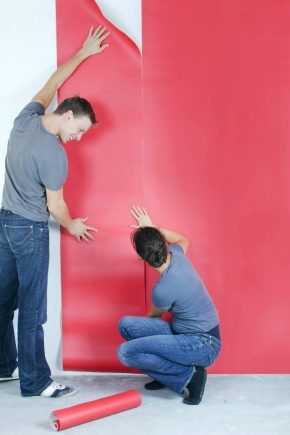
The construction market every year offers more and more new products for decorative wall and ceiling decoration, but wallpaper remains on the list of leading materials. There are enough reasons for this: low price per roll, quick and easy finishing process, wide range of textures and colors, the ability to create an original design. Wallpaper is suitable for the embodiment of a complex idea, adjusting room parameters and simple cosmetic repairs.
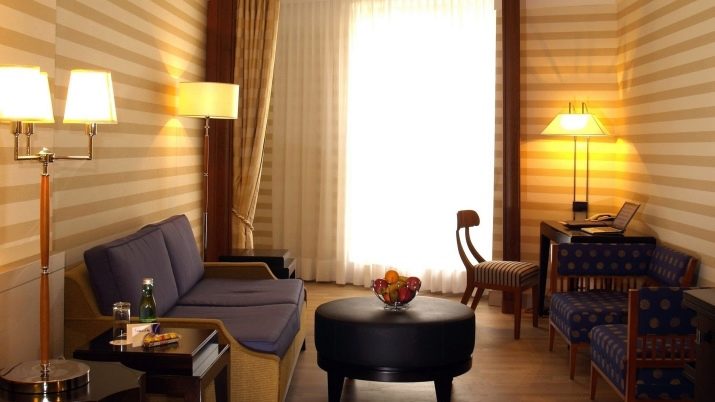
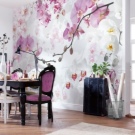
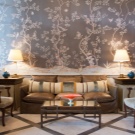
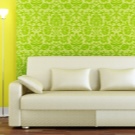
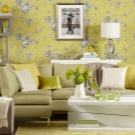
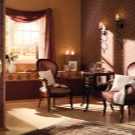
Many choose them to finish with their own hands, but the result does not always meet expectations. Common problems arise: the wallpaper bubbles, "moves away" from the walls, the joints of the stripes are striking, the pattern is incorrectly matched, the corners, slopes and protruding parts are ugly finished. But do not despair if you have already started a renovation using wallpaper!
You can correctly and accurately tackle wallpapering yourself, based on the recommendations of professionals.
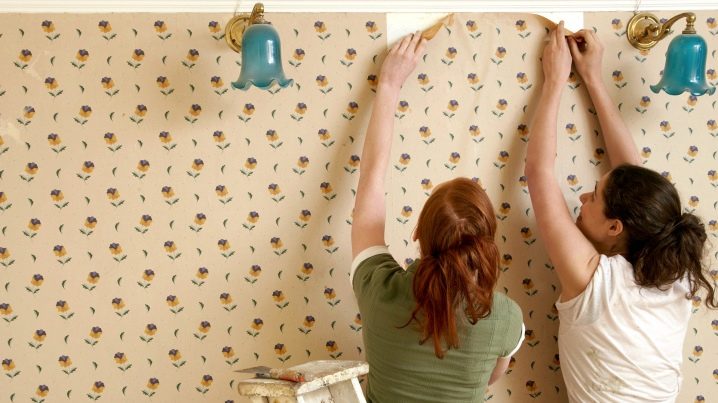
Fundamental rules
Wallpapering is not always a difficult process. The technology for applying such a decorative coating to the surface depends on many factors:
- Type of "rough" finishing of the working surface. Wallpaper is a finishing, decorative finish. How well they fit on the walls or ceiling depends on the base material. It can be brick, block, concrete, plaster, wood, drywall. On some types of surfaces, wallpaper can be glued immediately, and some require preliminary preparation in several stages.
- Surface direction. The composition, advantages and disadvantages of wallpaper, their weight affect how convenient it is to apply them on the vertical surface of the wall and the horizontal of the ceiling. Natural wallpapers are not suitable for this purpose; vinyl, textile and photo wallpapers require caution.

- Features of the layout. Almost any wallpaper is easy to glue in typical apartments with a minimum number of corners and joints, however, modern apartments with an improved and original layout can become a real problem due to the abundance of protrusions and niches in the walls, doorways of an unusual shape, most often arched. In them, it is best to give preference to materials that are convenient to work with, for example, liquid wallpaper.
- The dimensions of the room. The larger the room, the more expensive the cosmetic repairs will cost and the more difficult the process will be. For small rooms it is better to choose wallpaper that does not require complex preliminary surface preparation and does not have a complex pattern that needs to be "adjusted". Fitting the picture and aligning the joints significantly increases the repair time and requires at least one spare roll to successfully align the strips.
- Wallpaper type. There are so many varieties of wallpaper that some of them have little in common with the usual type of this material in rolls. And thin paper wallpapers have long outlived their usefulness in all respects, although they can still be found in stores.
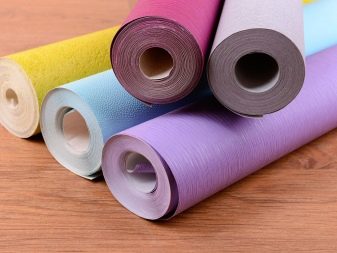
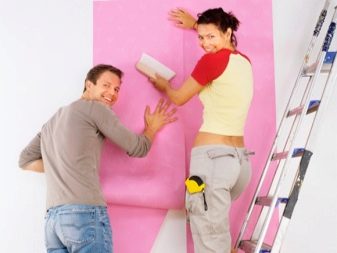
Types of wallpaper
- Paper. The cheapest, allowing the walls to breathe, the easiest to use, but at the same time they are too thin, they rarely have a relief pattern, the surface burns out, absorbs odors and is not subject to wet cleaning. They cannot be applied to many types of surfaces.
The service life of such wallpapers is no more than 4-5 years;
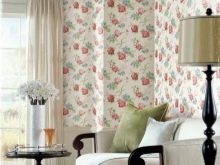
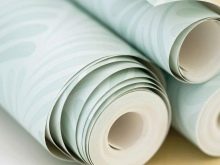
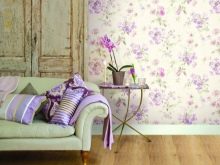
- Non-woven. This is a modification of paper wallpaper, the quality of which is improved by adding fabric fibers. They have all the advantages of paper ones, but they are applied at the same time to almost any surface, they last much longer, they are suitable for ceilings, they are washed, they retain a presentable appearance longer, they are suitable for painting;
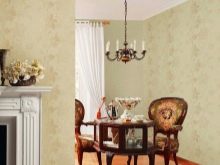
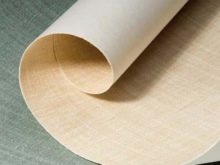
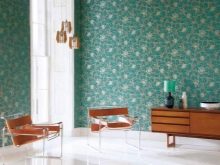
- Vinyl. Their non-woven paper backing is covered with foamed vinyl, which prevents the wallpaper from breathing. They are not suitable for bedrooms and children's rooms, but they have many advantages: they are resistant to moisture, do not absorb odors, are suitable for kitchens and hallways, retain the original color and relief of the pattern, can be painted more than 5 times;
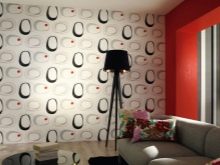
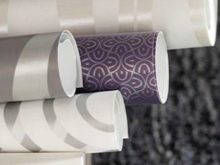
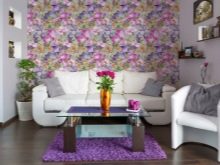
- Acrylic. Less wear-resistant than vinyl, but breathable. Suitable for different types of walls and for all rooms in the house;
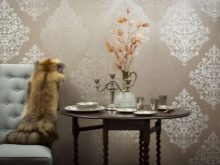
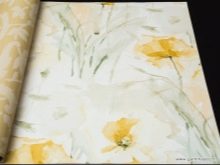
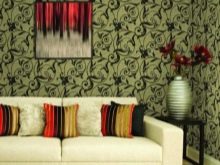
- Natural. This is an expensive material made from organic raw materials (bamboo, veneer, straw, reed, algae). They are environmentally friendly, warm, aesthetically pleasing, suitable for various surfaces, fixed with ordinary paper or non-woven wallpaper glue. However, it is more difficult to trim corners and slopes with them, they are afraid of moisture, sun and dust, the joints will be very noticeable due to the peculiarities of the material;
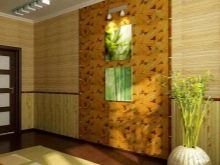
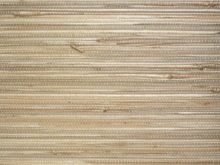
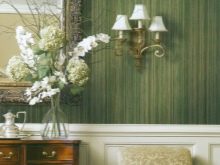
- Glass fiber. Refers to modern finishing materials. Relevant to use for walls in new buildings that shrink. They do not require multi-layer surface preparation, serve up to 30 years, protect walls from cracking, are not afraid of odors, water, smoke, fire, therefore they are suitable for all types of premises, hypoallergenic and bio-resistant.
Glass fiber can be repainted up to 15 times. It takes some practice to apply them;
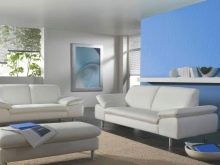
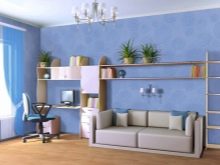

- Woven or textile. Decorating with such wallpaper is very difficult, expensive and requires the participation of a qualified technician or some practice. But they are popular due to their positive qualities: environmental friendliness, expensive appearance, exclusive design, they do not fade, they have sound insulation properties. The width of the roll makes it possible to make a surface without seams and joints.
But they are not resistant to moisture, dust, dirt and pet claws;

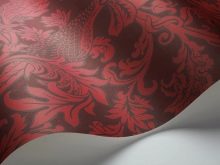
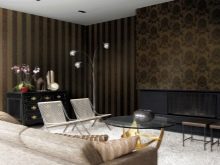
- Metallized. They are beautiful, especially for interiors in the style of minimalism, techno and hi-tech, wear-resistant, washable, do not fade, improve noise insulation. The price per roll is very high, and gluing requires preliminary preparation.
The walls should be perfectly aligned and smooth so that the thin foil does not bubble;
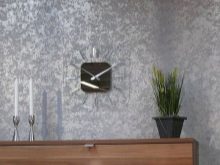
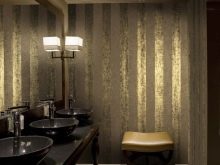
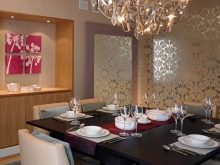
- Photo wallpaper. They have all the advantages and disadvantages of paper wallpaper, while helping to create interesting decor and optical illusions in the room. Applying them to the surface requires a lot of patience, since they often have a self-adhesive base that is glued to the wall and immediately leveled, gradually removing the protective layer. You can stick them yourself, but this is a very long and painstaking process, during which air bubbles may appear on the wallpaper, and the drawing may go to the side;
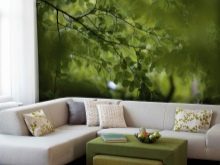

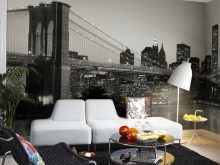
- The liquid wallpaper. The technology of their application is strikingly different from other types of wallpaper, since in dry form they are a powder from a mixture of cellulose and fabric fibers, adhesive and decorative particles. Wallpaper is diluted with water, and applied with a special construction "float" and spatulas. They differ in many advantages, the main of which are the absence of joints, the ease of processing protruding fragments on the wall, slopes, corners, jambs. The surface is beautiful and lasts an average of 10-15 years. Applying wallpaper yourself is not easy.
It is important to strictly follow the instructions on the packaging and practice working with a spatula and grater.
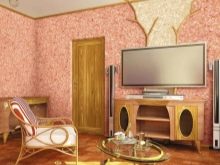

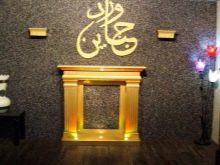
Self-sticking rules
The very process of decorating walls with wallpaper requires adhering to some general rules:
- Compliance with safety precautions. This applies to many points when gluing wallpaper yourself, from using a respirator when working with chemical compounds to clean the work surface from old paint and ending with a power outage. Since any wallpaper is applied with glue, and the glue is diluted with water, the work is considered "wet", and if moisture gets on the outlet or bare wires can lead to injury from electric shock;
- High-quality preparation of the work surface starts by cleaning the walls or ceiling of old coating, be it paint, wallpaper or plaster. The paint is removed using special solutions and a spatula or by heating with a building hairdryer and subsequent removal. Then the surface is leveled with sandpaper.
It is enough to remove the wallpaper using a knife or spatula. However, you need to remove the wallpaper entirely, otherwise the remnants of the old coating will get wet from the glue, and in these places the new canvases will go in bubbles. In the future, they dry out, but irregularities form on the surface;
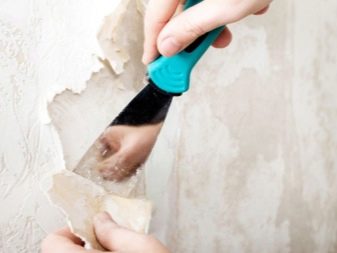
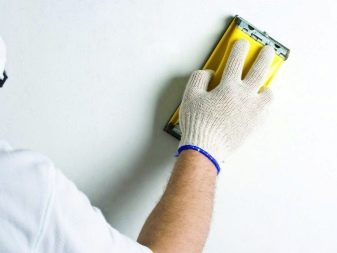
- Leveling the work surface suitable for the type of wallpaper in a way. In some cases it can be drywall, in others it is an MDF board, in still others - several layers of water-based paint. The smoother the surface, the better the wallpaper will fit on it;
- The use of primers is never superfluous. First of all, they improve the adhesion of adhesives to the wall surface, and also work as antiseptic agents, protecting against decay, the formation of fungus and mold;
- The required amount of material is calculated in advance. It is advisable to purchase it with a small margin, since no one is immune from mistakes, and different batches of wallpaper with the same pattern and texture may differ significantly from each other. Liquid wallpaper is especially capricious in this respect. The amount of substance per square meter is often exaggerated by the manufacturer, and one package is not enough for 5, but for 3 square meters.
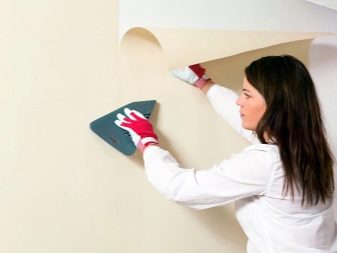
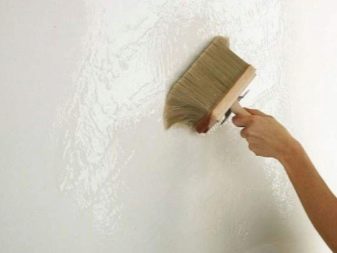
-
The liquid wallpaper home-made and it will not work at all to make the same, even if the exact proportions are observed. Therefore, the entire material must be purchased at once with the expectation of force majeure;
- The instructions on the packaging must be followed. If the manufacturer recommends applying glue to the wallpaper, they are applied to the wallpaper, if on the wall - only to the wall. For heavy types of wallpaper - both on the wall and on the strip;
- Don't skimp on glue. The more expensive and heavier the material, the more durable the glue is needed. Saving on it by using paper glue for textile wallpaper is a bad idea. As you know, a miser pays twice, and wallpapering is just such a case. Glue is also purchased with a small margin;
- The right start is the key to success. There are many opinions about where to start gluing wallpaper. Some recommend placing the first strip at the window, others in the corner, and still others at the door slope. In fact, a strictly vertical line is taken as a basis. If it is not there, you need to lay it yourself, using a building level and drawing accessories. This is especially important for wallpaper with a pattern that requires matching strips to each other;
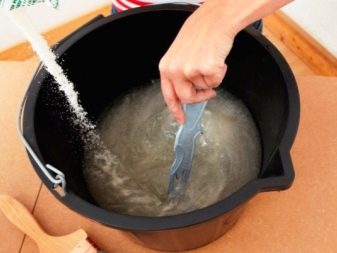
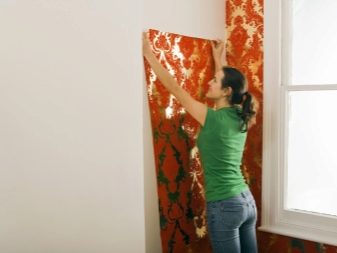
- A strip of wallpaper must be cut with a small margin, and remove the excess already on the wall with a wide spatula and a sharp knife on paper;
- "Seven times measure cut once" - a rule that is worth adopting. It is not necessary to measure seven times, but it will not be superfluous to double-check the measurements at several points at least once;
- Apply the glue with a soft bristled brush, and align the strip of wallpaper on the wall with a special roller, so the risk of irregularities and air bubbles is minimized;
- To make the joints invisible, the strips of wallpaper must be fitted close to each other., but do not overlap even by a millimeter. To make this easy, start gluing the strip from the place where it joins the other. One strip is aligned relative to the other by moving it with your hands.When the ideal position is reached (no gaps and nubs), align and glue the rest. Then roll it out on the wall with a conical roller and remove excess glue with a dry napkin;
- Remove excess glue before it dries., otherwise ugly traces will remain on the wallpaper.
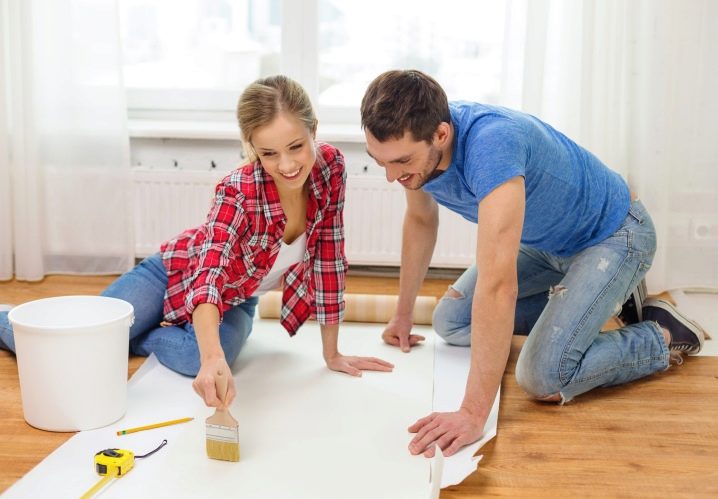
Preparing the walls
Substrate preparation is an important and indispensable step towards obtaining a durable and beautiful wall covering. The service life of the wallpaper and its condition during operation depend on the quality of the preparatory work: will darkening, unevenness, fungus appear on them, will they move away from the surface of the walls.
The complexity of the procedure is determined by the current state of the work surface and the type of walls.
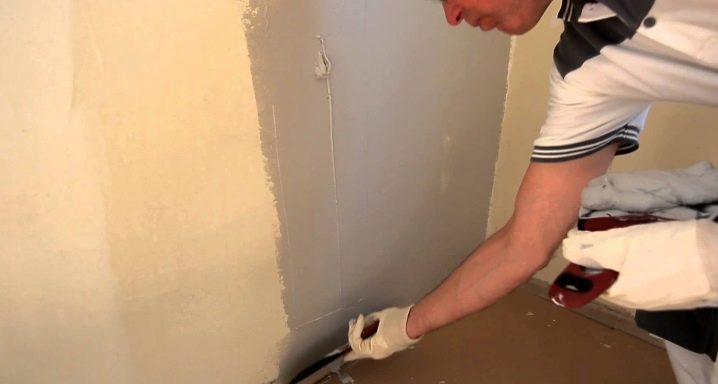
Concrete
The basis of concrete, brick, different types of building blocks has its own advantages and disadvantages.
The positive point is that on such a surface you can glue any type of wallpaper, be it a paper version or glass fiber. Minus concrete, brick and block surfaces - they require preliminary preparation before gluing the wallpaper.
Preparation is necessary for several reasons. First of all, porous wall surfaces are highly absorbent. This does not threaten the wallpaper itself, if they are not liquid, but a lot of glue is needed. It will literally disappear on concrete and brick, like evaporating water. The second reason is a very uneven work surface, on which it is simply impossible to perfectly glue a strip of wallpaper without bubbles and irregularities. And the third important factor is the color of concrete, brick or blocks. As a rule, they have shades of rich gray and red-brown tones, which under thin light wallpaper will look like ordinary dirt.
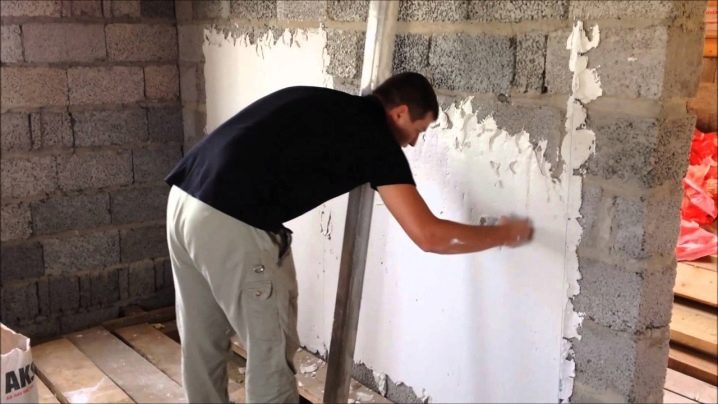
The process of preparing concrete, brick and block walls for wallpapering is carried out in several stages.
The first stage is preliminary priming. Ready-made compositions, universal or intended for a specific type of surface, as well as a home-made solution of water and glue, are suitable for it. The second option gives a thicker layer and is cheaper, but does not have antiseptic properties.
To prepare a homemade primer, it is necessary to dilute wallpaper glue or PVA with water in a ratio of 1: 3 or 1: 5. It should be applied to the wall in 1-2 layers with a wide brush or roller.
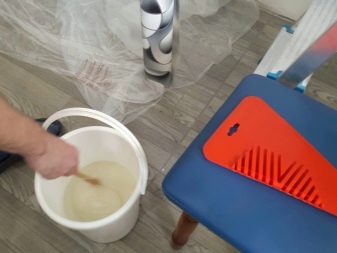
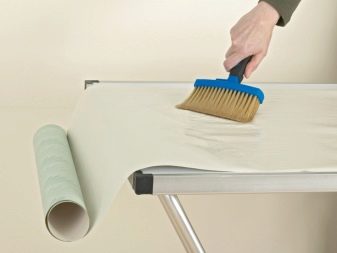
But this is not enough for the surface to become as convenient as possible for wallpapering, especially if they do not differ in high density and dark color.
When the glue is dry, it is necessary to proceed to the second stage - apply white enamel or putty to the wall in 1-2 layers. Enamel is used for walls with a minimal pronounced relief, for example, if the concrete surface has been leveled by grinding and there are few joints on it, or on a wall made of smooth ceramic blocks. This option is rare. Most often, the surface of the wall must be in two layers, giving time to dry for each of them, and treated with a putty compound.
It can be purchased both ready-made and dry for dilution with water.
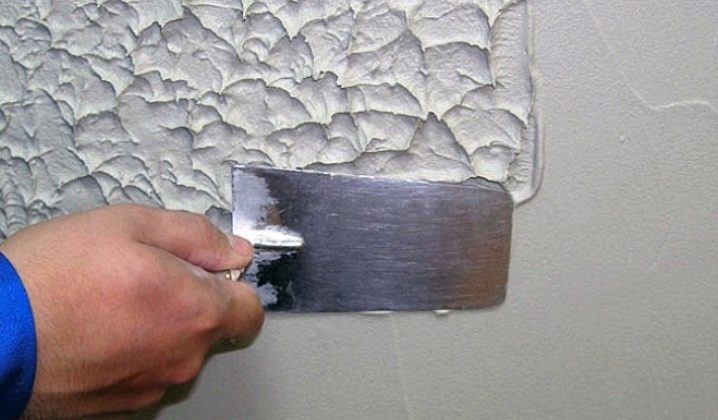
Dry gypsum plaster has elasticity, which makes it possible to fill cracks, chips, pits. It is resistant to temperature extremes and protects wall masonry. It contains substances of organic origin, which do not harm either during work or after. Diluted with plain water, applied with a spatula. After the top layer has dried, the putty is sanded to an even surface with fine to medium-grain sandpaper. You can do this by hand using painting tools or with a grinder.

It is important to take into account that the processing of dry putty is a dusty job, and it is not recommended to perform it without a respirator and protective clothing.
When the dust settles after sanding the surface, you can proceed to the third stage - the finishing coat. This does not apply to decorative finishes.We are talking about completing the rough finish of the walls with a re-primer. Here it is already desirable to use special formulations of deep action. They greatly increase the adhesion of the wallpaper glue to the wall and make the coating bio-resistant.
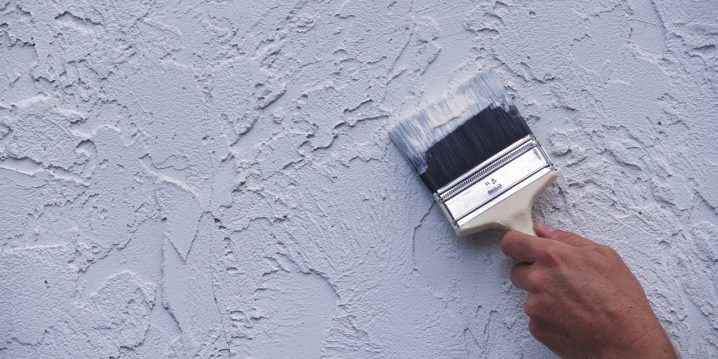
There are also alternative solutions without putty:
- Pasting the wall with newspapers. They are used after the primer coat instead of putty or plaster. This method is faster, easier and cheaper, but less durable;
- Use of concrete contact. This is a ready-made solution that resembles a primer in its properties. No additional coats are required after application. 1-2 layers of concrete contact fully prepare the concrete walls for wallpapering. Such a solution is quite expensive, and its composition is not always environmentally friendly;
- Cork or polyurethane underlays. A good replacement for putty and plaster, since such a material ideally levels the surface of concrete and brick walls. Working with it is faster, easier and cleaner. Additionally, it provides good noise and thermal insulation. However, a preliminary and final primer are also required.
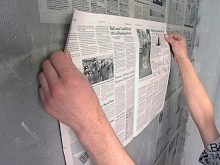
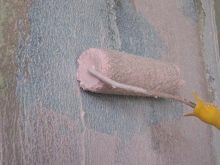
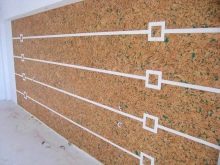
The same options are used when gluing wallpaper on an artificial stone.
Wooden
For private houses and buildings of the old type, interior wall decoration with wood and its derivatives is characteristic. These include plywood, timber, MDF, chipboard, fiberboard, OSB boards.
The characteristic difference between wooden surfaces is smoothness and lack of unevenness. Grinding gives the same result as the time-consuming process of applying putty, however, there may be many joints, traces of knots, small gaps in the wooden walls.
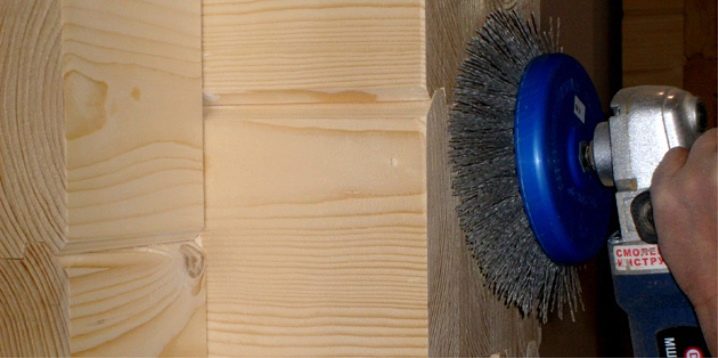
The best option for preliminary preparation of wooden surfaces is the same three steps as for concrete walls. But if there is no time and desire, you can limit yourself to two stages.
The first is the application of a primer. The tree is subject to decay and suffers from the vital activity of various organisms. To prevent the wallpaper from blooming with a violent color of mold and mildew, the wooden surface is pre-treated with an antiseptic - a deep penetration primer.
The second stage is leveling the walls. For this purpose, old newspapers are suitable, with which they paste over the entire work surface, like rough paper wallpaper, and thin fabric.

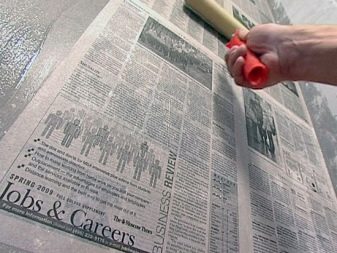
The fabric works better. When it dries, it stretches like a drum, and the walls become hard and even, as it should be for wallpapering. There is no need to re-treat fabric and newspapers with primer
Also, on a wooden base, you can glue wallpaper onto plaster covered with primer, or apply new wallpaper on top of old paper ones, provided that they hold well, do not bubble and do not have a few more layers underneath.
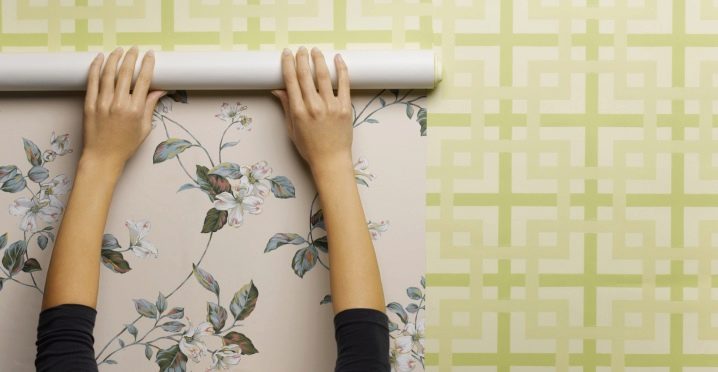
Drywall
Drywall is a sheet or plate material that has a number of advantages: environmental friendliness, lightness, wear resistance, and a flat surface. The latter advantage often leads to a common mistake - gluing wallpaper on drywall walls without preliminary preparation.
Despite the fact that the drywall sheet itself has a comfortable smooth surface and the wallpaper fits well on it, it is impossible to cover the entire wall with one sheet. At the joints of the sheets, cracks and small irregularities inevitably form, which must be repaired so that bubbles and bumps do not form on the surface of the wallpaper.

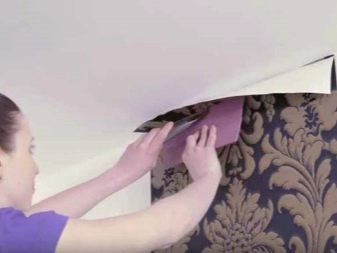
Drywall preparation is done step by step:
- Primer. As with any other type of surface, it is necessary to form a biostable and hydrophobic coating and to improve the adhesion of the two materials.
- Seam sealing. For this purpose, the so-called serpyanka mesh and adhesives are used. Outwardly, serpyanka looks like gauze or a medical bandage, but it consists of fiberglass or high-strength polyester threads. It is tightly glued to the joints of drywall, avoiding the formation of air cushions.
- Putty. At this stage, non-professionals make a common mistake - they cover only the serpentine at the seams with a putty compound, while the entire surface must be leveled. Firstly, it will help to make the surface as flat as possible, and secondly, it will protect the drywall from damage during the next repair. Heavy wallpaper will pull away from it along with the glue and the top layer of the sheet.
- Grouting or leveling the surface. It is absolutely impossible to put the putty, therefore, after it is completely dry, it must be sanded until smooth. It is advisable to carry out the procedure in two approaches - first with coarse sandpaper, then with fine one.
- Final coat with primer. It is carried out in two layers using a deep-acting primer. It will help the glue to “grip” better and will prevent the putty from absorbing too much glue. When using liquid wallpaper, it is permissible to use white enamel paint in 2 layers.
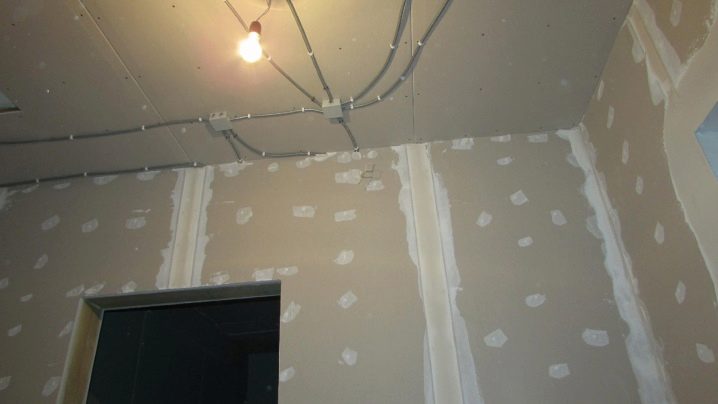
Other surfaces
Clean concrete, brick or block walls, as well as plasterboard floors, are usually found in houses that have recently been completed, and the walls in them have never been renovated. Plastered walls are common in new buildings. But most of the surfaces requiring cosmetic repairs, in particular, wallpapering, are walls in apartments and houses, where the decorative finish has changed at least once.
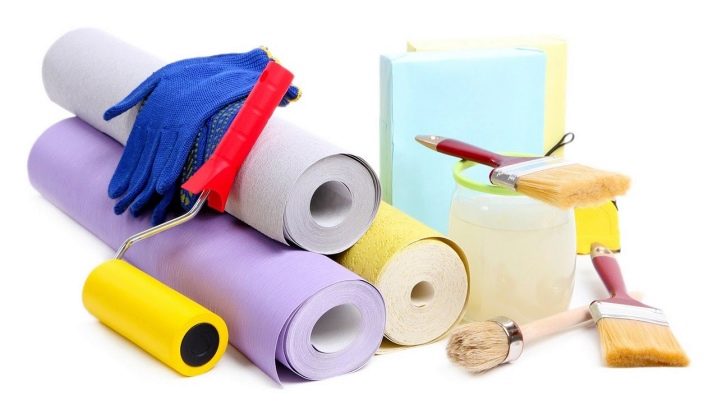
In such rooms, traces of the previous coating remain on the walls, and they can be completely different:
- Whitewash. Whitewashed walls are a specific basis for wallpapering. The renovation may not be successful and the wallpaper will wear off in a couple of weeks or months. But in some cases, whitewashed walls may well serve as the basis for wallpapering:
- The whitewash layer is thin and does not flake off;
- The surface of the wall is not cracked;
- The lagging layers of whitewash are small and they were removed with a spatula;
- Wallpaper is paper or not thick. In other cases, it is not recommended to use whitewash wallpaper. The risk is especially great when applying textile, natural, liquid and fiberglass wallpapers. They will not last even six months, as the manufacturers warn about.
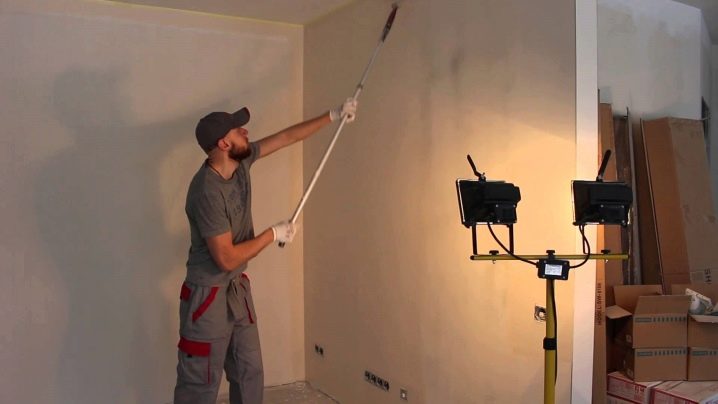
- Plaster. There is no definite answer regarding this type of finish. If the plaster is gypsum and as even as possible, it is suitable for wallpapering without additional manipulation. The only thing to do is wipe the walls with a damp cloth. If the layer is not new, it is recommended to treat it with a primer or plaster again. If the plaster is cement, then before gluing the wallpaper, it is necessary to apply a layer of paint and a primer on top or level the too grainy surface with gypsum plaster, and then cover it with primer. On such a plaster, you can safely glue any type of wallpaper.
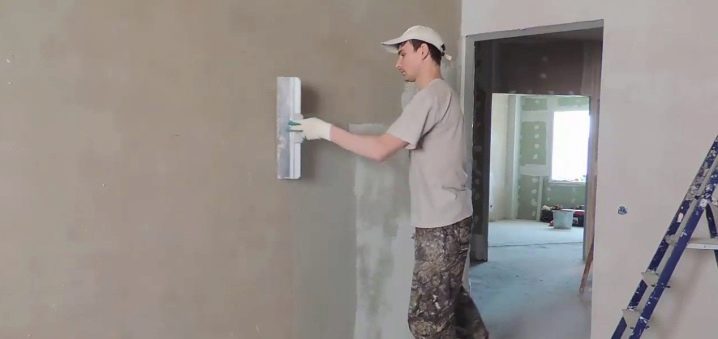
- Paintwork. As with whitewashing, several factors affect the suitability of a coating as a base for wallpaper. You can glue wallpaper on oil or alkyd paint if:
- The paint is fresh enough;
- The thickness does not exceed two layers;
- Primer was applied under the paint;
- The wallpaper is supposed to be glued over the paint not in a room where strong odors were present (cooking, cigarettes, pets), since the paint absorbs them;
- There are no cracks and chips on the surface, no peeling fragments. This paint can be washed, primed and lightweight wallpaper can be glued on top. If it has flaws, it is better to remove the paint and use putty and primer. For removing paint, special compounds (B52), mechanical stress (spatula, iron brushes), high temperatures (use of a building hair dryer and a spatula) are suitable.
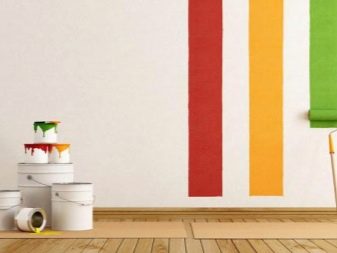
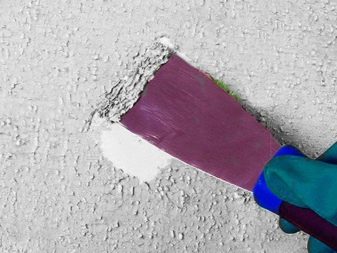
- Old wallpaper. They serve as a good base if it is paper wallpaper that adheres well to a wooden surface, but not in the kitchen or in the corridor, where there are a lot of dirt and odors on them.It is possible to glue new wallpapers on old ones only in emergency cases when cosmetic repairs are urgent. If you have free time, you should take care of a high-quality base for wallpaper, then they will last longer.
- Newspapers. This paper base works like old wallpaper. If the newspapers are peeling off the wall, it is better to peel them off, otherwise bubbles and irregularities will go over the new wallpaper.
- Textile. Textiles are easily destroyed, rot and are not biostable. It is recommended to glue such a base again or completely replace it with soil and plaster.
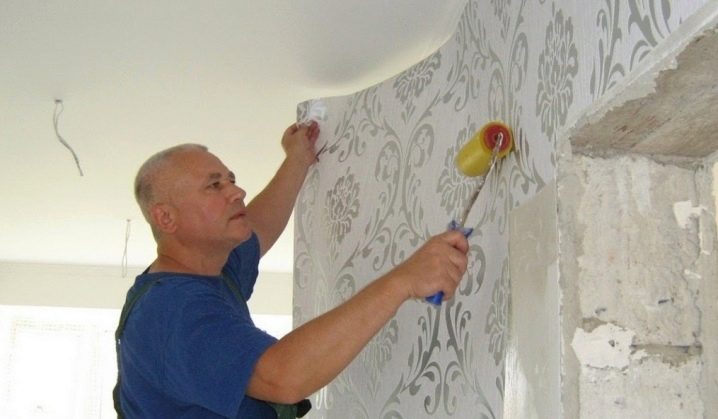
Certain difficulties are encountered when decorating walls in old houses and surfaces with a large number of protruding parts.
It is important to treat old walls with protective soil, and carefully seal up the protruding parts with putty compounds or "sink" into the wall.
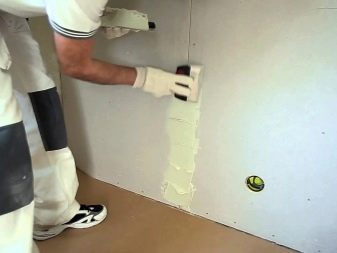
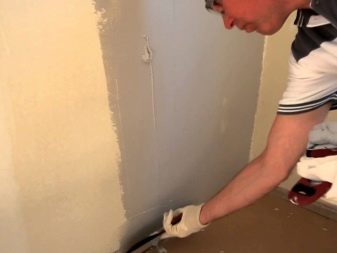
How to glue?
The preparation of tools is an important stage in the implementation of repair work. When everything you need is at hand, work is faster. So it is easier to eliminate accidental defects and irregularities on the surface of the walls covered with wallpaper.
When working with different types of wallpaper, the list of necessary tools changes. Conventionally, you can combine them into several groups: wallpaper on a paper base or non-woven base (vinyl, acrylic, textile, natural, photo wallpaper, non-woven and paper) glass wallpaper, liquid wallpaper.
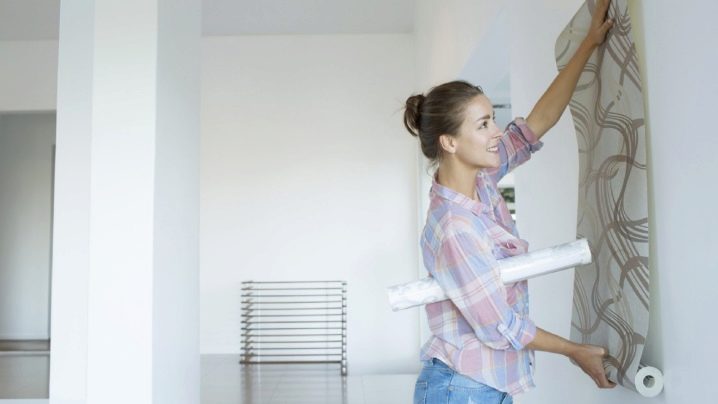
Working with paper and non-woven wallpaper requires the following tools:
- Surface preparation:
- A spray bottle with water or a special solution to remove old coatings (wallpaper, paint);
- Spatulas of different sizes and repair remover;
- Stepladder;
- Work clothes, goggles, gloves, respirator (when removing plaster);
- Primer or PVA;
- Putty composition;
- Sandpaper and sanding tools (manual or electric);
- A damp towel for cleaning the spatulas while leveling the walls with putty.
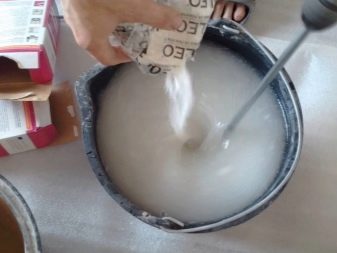

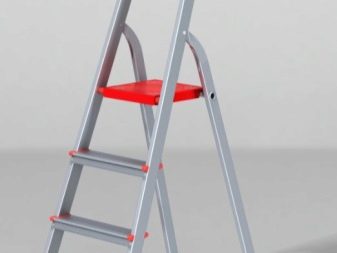
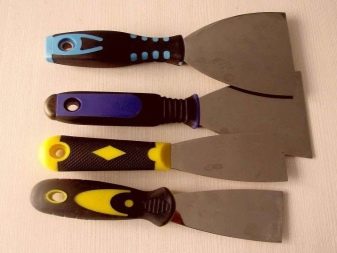
- Checking the walls. This is an absorbency test performed with a spray bottle filled with water. It is necessary to spray on the wall. If the water rolls down - this is an indicator of poor adhesion, you need a primer or paper under the wallpaper. If it remains stained, the absorbency is too high, and a primer or paint coat can lower it.
- Dilution of glue. Here you need glue recommended by the wallpaper manufacturer, a mixing container, a bucket of water and a tool for mixing the glue with water. You can use a drill with a mixer attachment at low speeds.
- Finding a vertical line. A tape measure and drawing supplies or a building level and a pencil may come in handy.
- Preparing wallpaper. Tape measure, pencil, paper knife or sharp scissors for cutting wallpaper into strips with a margin of 5-7 cm.
- Actually, gluing wallpaper. A brush for applying glue, a cuvette, a step-ladder, a foam roller for applying glue, a silicone (rubber) roller for rolling wallpaper, dry clean cuts of fabric or towels, a container with clean water.

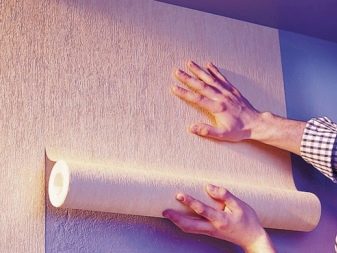
For gluing fiberglass you need an almost identical set:
- Work clothes, rubber gloves and cotton gloves. Protective mask and goggles:
- Primer;
- Putty;
- Spray bottle with water;
- Spatulas of different sizes;
- Plastic spatula;
- Soft brushes;
- Stepladder;
- Plumb line and spool of thread;
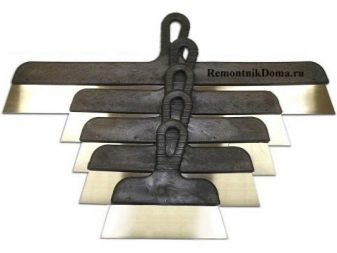
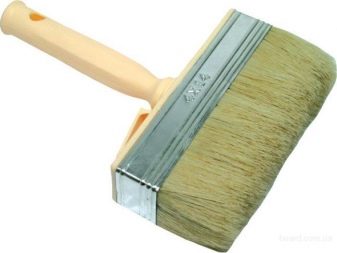
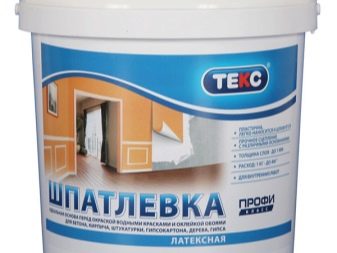
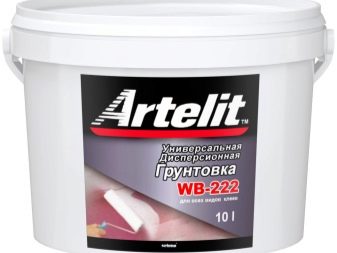
- Drawing accessories;
- Scissors or utility knife;
- Cuvette;
- Bucket with water;
- Containers for diluting glue and putty;
- Slow-speed drill with mixer attachment;
- Glue;
- Roller;
- Glass fiber;
- Topcoat paint for glass fiber wallpaper.

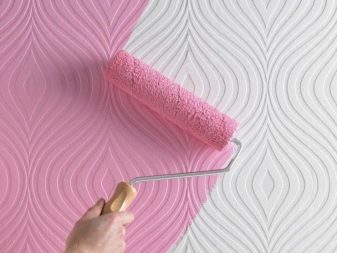
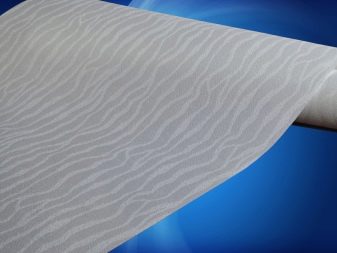
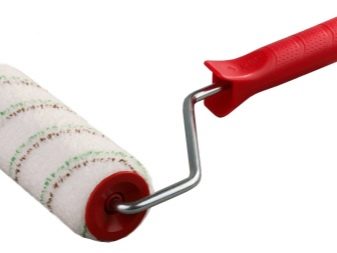
The set of tools for applying liquid wallpaper is different:
- Wall preparation:
- Primer composition;
- Plaster or putty;
- Oil based white paint;
- Plastic spatula;
- A set of spatulas for leveling walls;
- Painting brushes;
- Sandpaper with grain numbers 80-100 and 140-160.
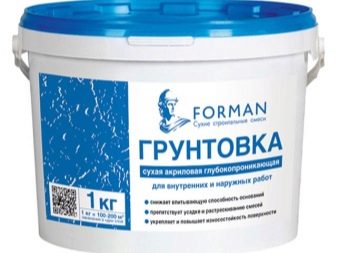
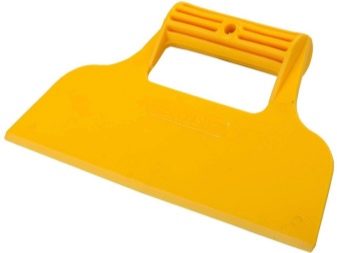
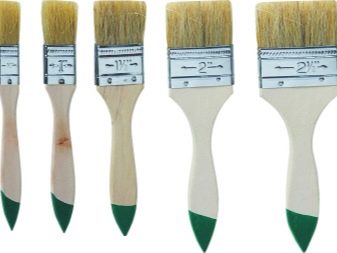

- Dilution of dry mix:
- Large capacity for mixing dry mix and water;
- Water and measuring jug;
- Drill with mixer attachment;
- Plastic wrap to cover the container of the liquid mixture and prevent moisture from evaporating. The amount of water recommended by the manufacturer for diluting the dry mixture does not take into account the loss of moisture during evaporation, as a result, the consumption of wallpaper per square meter and their density may slightly differ from the expected.
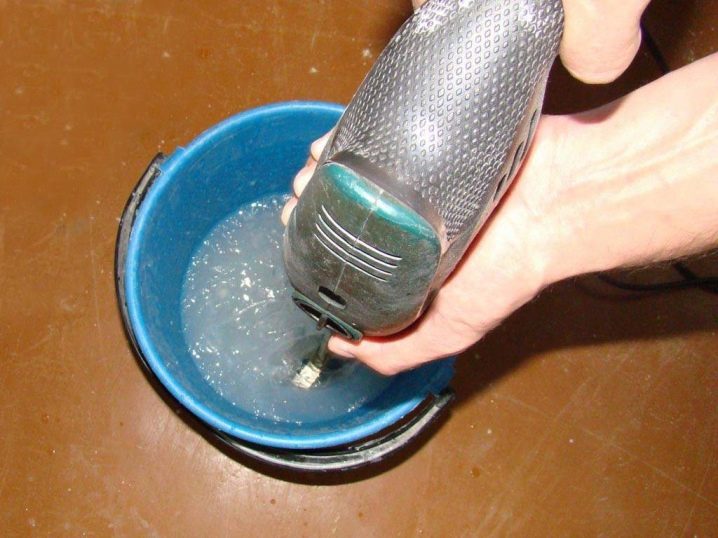
- Applying liquid wallpaper to the wall:
- Work clothes;
- Plastic caps for sealing outlets and switches. There is a lot of water in the composition of liquid wallpaper, getting the mixture on the socket of the outlet can lead to injury if the power is not turned off at all during the repair;
- Old wallpaper, newspapers, oilcloths to protect the flooring;
- Ladder;
- Drill with a nozzle for periodic mixing of the mixture;
- A container with clean water, a sharp spatula, dry cloths;
- Spatulas of different sizes;
- Transparent paint "float";
- Acrylic varnish for liquid wallpaper in a spray can. It must be applied after the wallpaper is dry to protect it from dust and make it washable. Without varnish, they will lose their appearance in a year or two.
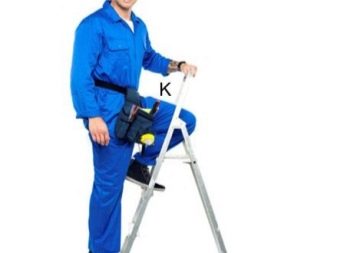

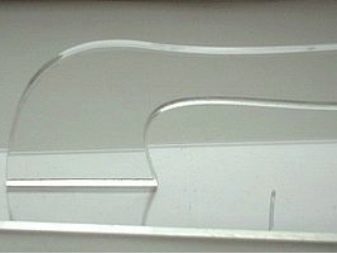

The ways
The technology for gluing wallpaper for most types of this finishing material is the same or differs only in minor details. The principal difference in the method of applying wallpaper to the wall is only liquid wallpaper, since it is a thick mass of cellulose fibers and an adhesive and is applied to the surface as decorative plaster, and not as a piece of paper.
Working with liquid wallpaper is more difficult than rolling, but they have a number of advantages, including the ability to finish the wall with an even layer without joints and seams.

Also, gluing wallpaper can be different depending on the appearance of their decorative surface. Wallpaper without a pattern is easier to glue, since individual stripes do not need to be adjusted. Monochrome rolls can be cut in advance into the required lengths with a margin of 5-10 cm. Wallpaper with a pattern requires more accuracy and patience.
When doing fitting, you need to follow a few rules:
- Correctly calculate how many stripes come out of one roll, and purchase wallpaper with a margin;
- Expand the roll a few meters and determine which is the top and which is the bottom. Often the roll has to be rewound so that the beginning of the pattern coincides with the free edge;
- Observe the markings on the packaging. Pattern docking can be zero (there is no need to adjust the stripes), straight horizontal (identical fragments are on the same level), stepped (the pattern is staggered), reversible (one stripe is glued with the pattern upwards, the other downwards).
- Before cutting off each next strip, carefully study the drawing and choose the roll from which you will need to cut off the smallest excess fragment so that the drawing matches.


Wallpaper with a simple pattern (lines, stripes, dots, various small curls, sequins) and wallpaper with a small print (flower, diamonds, abstraction) is easier to customize than wallpaper with a large pattern, and the total length of the rolls will require less. Also, options with the selection of fragments that fit each other simplify the meter-wide wallpaper.
Wide rolls are more expensive, but sticking to walls requires less time and effort. With their help, you can decorate the walls in a room with your own hands in one day.
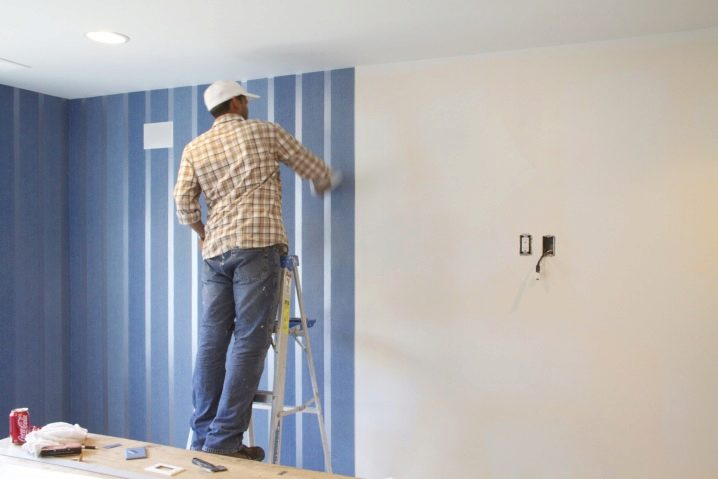
Some difficulties arise when it is necessary to paste over a room with wallpaper of different width and texture, or to change only a part of the decorative finish. Z
It is important here to choose the right tools and glue for each type of wallpaper and harmoniously combine shades and prints.
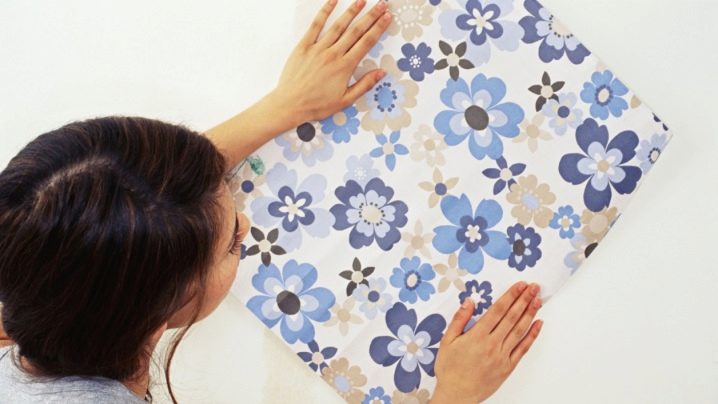
Features pasting in different types
The simplest and most budgetary option is paper wallpaper... They are lightweight, breathable, easy to grip on any surface.
The peculiarities of paper wallpaper are that they cannot be soaked in advance and kept in glue for a long time.The optimal time is 5-10 minutes, and after that they can blister, get wet through and tear in the places where they will be taken. This does not apply to wallpapers with multiple layers. They can be safely soaked and glued slowly.
The adhesive is applied directly to the cut of the roll if the wall is well prepared and primed. When applied to an old surface, it makes sense to coat the wall with glue.
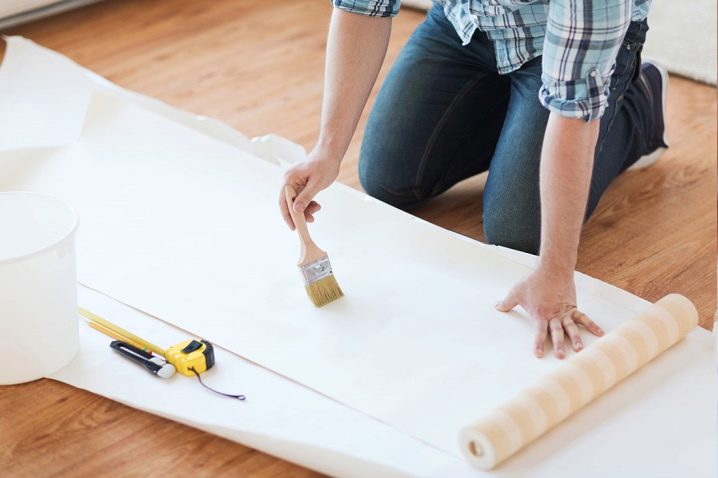
Wet paper wallpapers do not tolerate rough movements. They need to be carefully spread over the wall surface and not pulled strongly. Some important characteristics of wallpaper are reflected by the manufacturer on the packaging. There it can be indicated whether to glue the wallpaper end-to-end or overlap, whether it is permissible to use them for painting, whether glue has been applied to them.
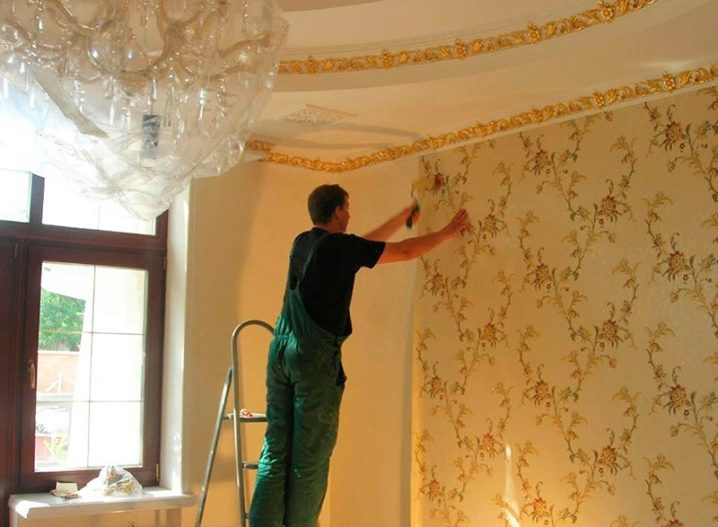
Wallpaper with glue applied - an unusual phenomenon for the Russian market. At the same time, they are not self-adhesive, as, for example, photowall-paper or film, on which you can use detergents. This is a wallpaper, the wrong side of which is smeared with glue and dried. On the packaging, this type of wallpaper is marked "Prepasted".
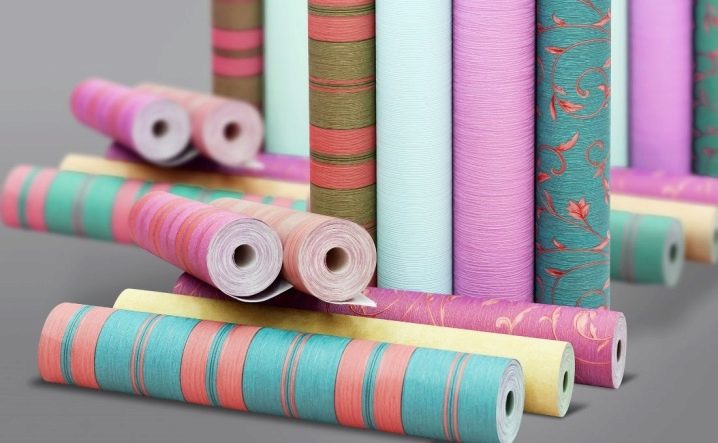
Their gluing differs from the usual one:
- After accurate measurements, a strip is cut off from the roll with a small margin, then it is rolled up with an adhesive layer outward;
- A loose roll is immersed in warm water (36-38 degrees) for 30-40 seconds;
- When the water has soaked the roll, the glue starts to work. It is pulled out of the water and rolled tightly for 4-5 minutes so that the wallpaper is completely saturated;
- The finished cut is laid out on the wall (with a margin at the top and bottom) and aligned along a vertical reference point (angle or line);
- When the strip has laid down in the right way, it is tightly smoothed to the wall with a rubber roller: first a vertical line in the center, and then a herringbone, smoothing from the center to the edges;
- The extra centimeters above and below are cut off with a long spatula and a clerical knife;
- Subsequent strips are glued overlapping or butt-like as wallpaper. Overlapping wallpaper with a special edge is best glued from the window so that there are no shadows at the junction of the two stripes. The joints are additionally ironed with a dense roller, placing a thin napkin under it (it will remove excess glue and prevent the line from parting).


Wallpaper for painting can be painted only after the glue has completely dried and possible defects have been removed.
The next popular type of wallpaper is non-woven. They are denser and able to mask some of the unevenness of the work surface. It is easier to glue them due to the fact that the adhesive is applied not to the wallpaper, but to the wall surface.
For better adhesion, experts recommend applying a strip of glue to the wall wider than the width of the wallpaper. The adhesive must be fresh, well diluted and suitable for non-woven wallpaper.
Non-woven wallpaper with a pronounced textured pattern should be rolled out with a soft roller, not pressing it too hard against the material. The next sheet can only be glued end-to-end, since the thickness of this type of wallpaper does not allow making an imperceptible overlap.
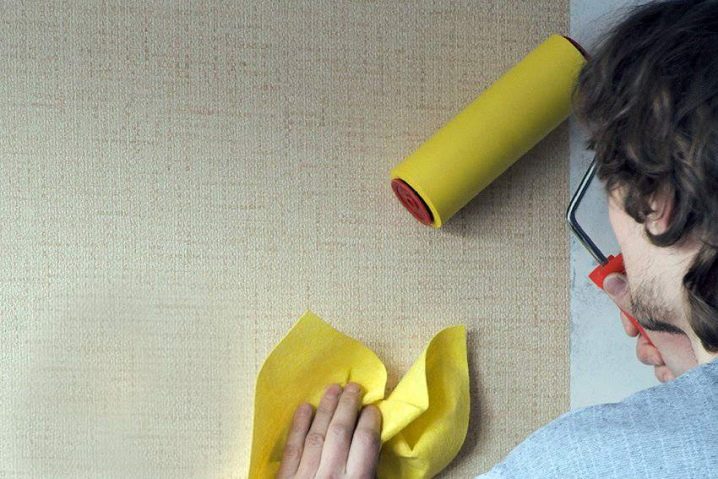
Vinyl wallpapers can have a paper or non-woven base. Depending on this, the glue and the method of application are selected - on a cut, on a wall or on both surfaces at the same time.
Vinyl wallpaper has a significant advantage - it is easy to wash it even with the use of household chemicals, so in the process you can not be afraid to grab the front side with your hands in glue. But there is also a minus - they are strongly stretched and compressed.
Hot embossed wallpaper is a type of non-woven vinyl wallpaper. Due to the expensive application technology, such wallpapers are elite-class products and require very careful handling during the do-it-yourself gluing process.
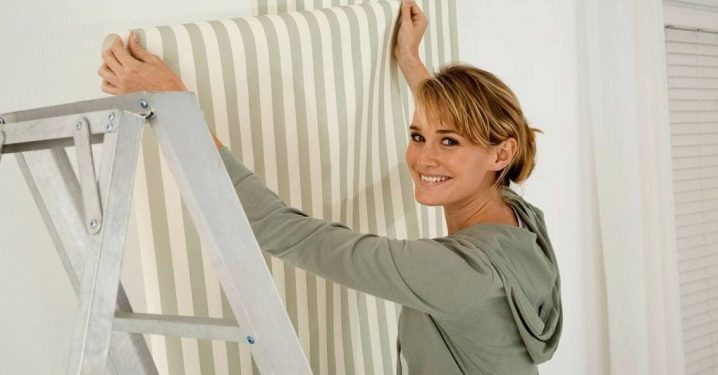
The main rule to follow when working with hot-stamped wallpaper is not to try to stretch it wide. The embossed fabric is made at high temperatures, therefore, it has the ability to shrink and unclench at different levels of humidity and heat.Wallpaper wet with glue stretches easily, the joints are smooth and neat, but after drying, the canvas will shrink and there will be gaps of several millimeters between the strips of wallpaper.
For gluing the embossed wallpaper, both the canvas and the wall are coated, while the cut of the wallpaper must be smeared very carefully, without gaps. It takes 10-15 minutes for the glue to absorb.
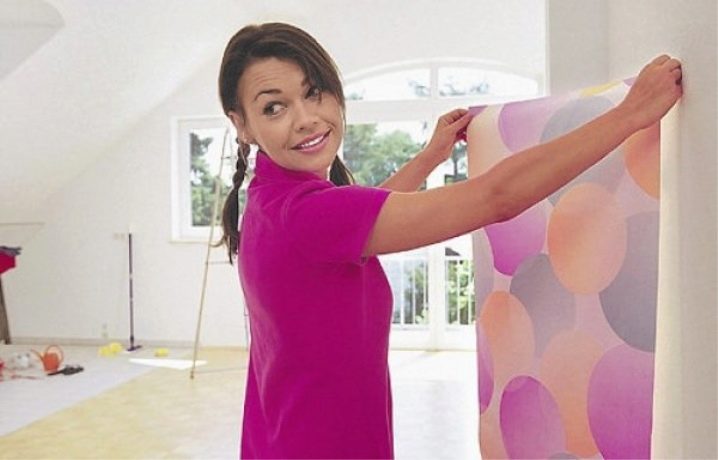
One of the most difficult materials to handle is textile or fabric products.
The gluing process is the same as for paper or non-woven wallpaper, but there are a number of rules that must be followed:
- Textile wallpaper is glued onto a perfectly flat and highly absorbent surface. Paint works best;
- The strips can only be glued end-to-end;
- The surface of the walls and ceiling should not differ in tone from the seamy side of the wallpaper. To even out the tone, it is recommended to use a white recycled backing for wallpaper;
- The wallpaper is cut with very sharp scissors;
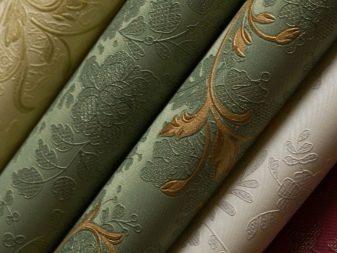
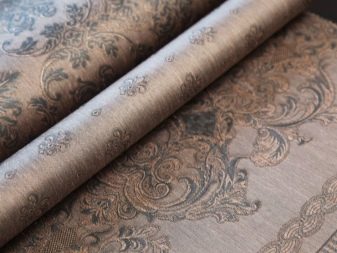
- The markings on the wall and the seamy side of the wallpaper can be done with a simple pencil, but in no case with a pen or marker - they will stain the wallpaper fabric;
- For textile wallpaper, a special high quality glue without dyes is used. It does not need to be diluted with water;
- It is possible to coat the seamy side with glue only in 1 layer, otherwise the material will swell;
- Time for impregnating wallpaper with glue in rolled form - 10 minutes;
- Textile wallpaper cannot be bent during the gluing process - creases will remain on them;
- During the drying of the wallpaper (up to 48 hours), no drafts should be allowed into the room;
- Textile wallpaper is glued horizontally without seams.
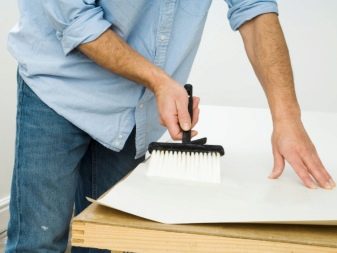
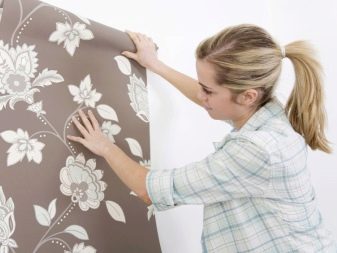
New in the construction market - natural wallpaper (bamboo, reed, straw and other plant varieties) also require a special approach. There are two main rules when working with them: gluing is carried out only after the wallpaper has adapted to the microclimate of the room. To do this, they are rolled out for a day in a room where they will paste over the walls. Water must not get on the wallpaper. For them, a special ready-made adhesive is used that does not need to be diluted.
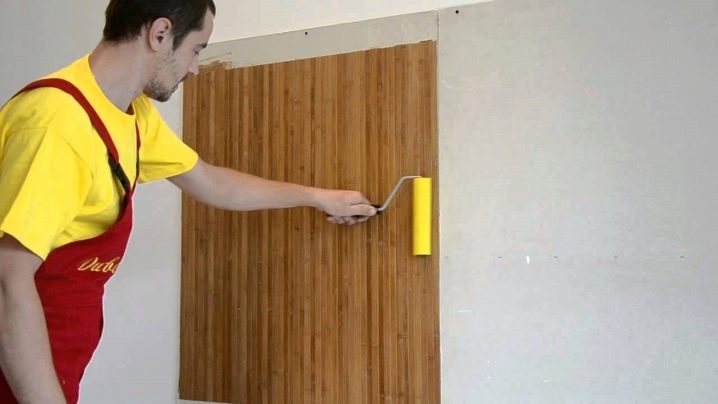
The rest of the rules are the same as when working with fabric wallpaper.
Wall murals often cause difficulties. By their texture, they are either paper or non-woven, sometimes vinyl. By the method of gluing - self-adhesive and under the adhesive composition.
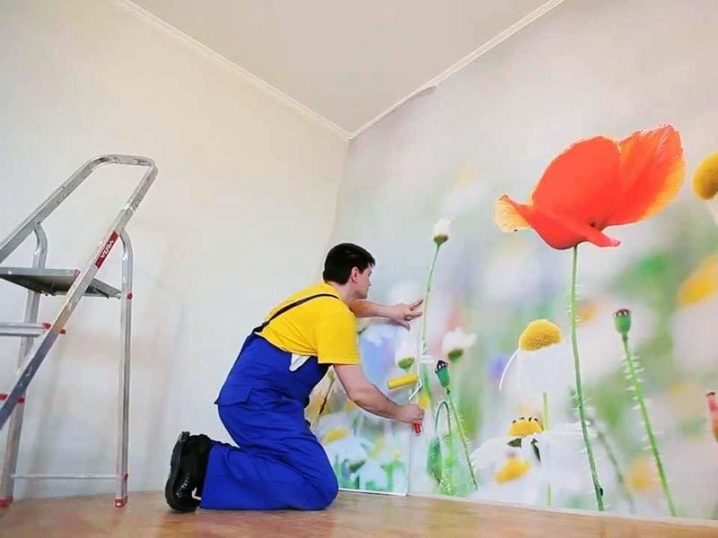
When gluing photo wallpaper, it is important to observe a few points:
- Using a ruler and a pencil, cut off the white border from each strip of patterned wallpaper to get a seamless picture;
- Lay out a whole picture on the floor, and then turn all the stripes over with the wrong side up;
- The glue is applied both to the wall and to the wallpaper;
- Wall murals are glued end-to-end from left to right;
- It is important to remove all air from under the strips with rubber rollers;
- The surface of the picture must be protected with a special coating against moisture and burnout.

A popular type of paintable wallpaper is glass wallpaper. They also require compliance with a certain algorithm of actions:
- The strips begin to glue from the window or doorway;
- They coat the wall with glue, capturing an area whose width is greater than the width of the wallpaper;
- The strip is glued to the wall from top to bottom. To do this, it must be leveled vertically and pressed against the wall coated with glue, leveled along the entire length with a plastic spatula;
- Smooth the joints with a rubber roller;
- Sticking is carried out at temperatures from +10 to +25 indoors;
- You can paint the wallpaper only after it has completely dried (48 hours).
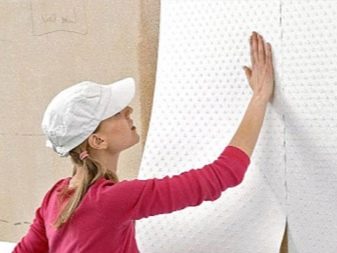
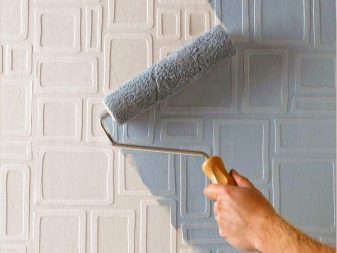
Liquid wallpaper differs significantly in the method of application.
Features that are important to consider when decorating walls or ceilings with liquid wallpaper:
- It is necessary to knead the entire volume of the mixture at once and apply it to the entire surface in one go, otherwise it will harden and it will no longer be possible to dilute it with water again;
- You need to stir the mixture with a construction mixer or a drill with a special nozzle;
- Wallpaper is applied to the wall with a spatula or a transparent paint float, spread in a layer of 1-2 millimeters;
- If an unevenness appears on the surface, you need to remove a fragment of the wallpaper with a spatula, until the mixture has frozen, moisten this area with water and apply a new layer of the mixture;
- A more convenient but expensive application option is to use a paint hopper gun for liquid wallpaper;
- For drawing, stencils and a preliminary sketch are used;
- The wallpaper dries up to 3 days;
- When the surface is dry, it must be covered with acrylic varnish to protect it from water, dust and sunlight.
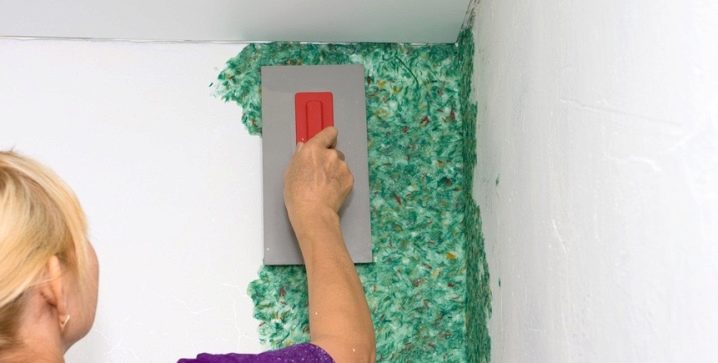
How to glue in the corners of a room?
Perhaps the most difficult and crucial moment in sticking wallpaper with your own hands is to bypass the inner and outer corners. This task becomes especially difficult when using dense fabrics - textile, vinyl, vegetable.
The easiest way to trim the corners beautifully and discreetly is to use liquid wallpaper.
For the rest of the types, repair experts recommend following several important rules:
- Do not glue a whole strip of wallpaper in the corner, especially if they are meter high. Such a strip will go in folds and it will not work exactly.
- A fragment of wallpaper must be taken with an overlap so that creases do not form. The greater the curvature of the corner, the larger the allowance should be. On average, 2-4 centimeters are enough.
- If the strip begins to wrinkle and wrinkle when glued, you can make small notches with scissors towards the crease.
- For dense wallpaper, a plumb line is required.
- When gluing wallpaper at the door, they must be placed as close to the jamb as possible so that there are no gaps.
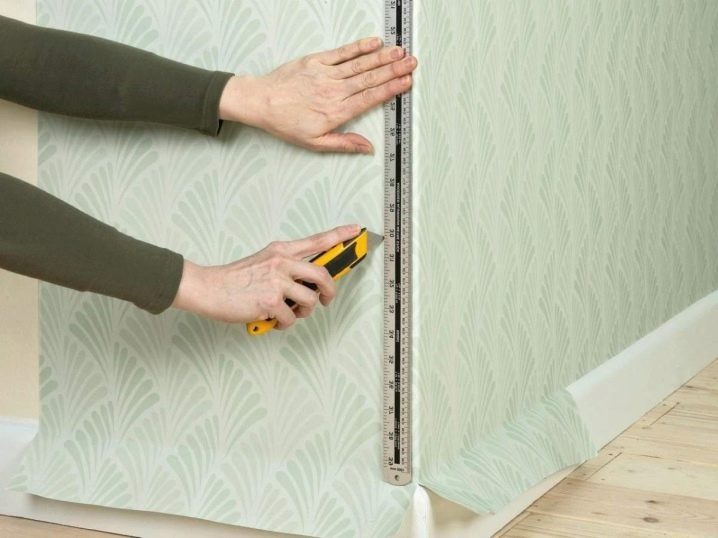
The step-by-step instruction includes the following steps:
- Preparing the corner. This process is carried out simultaneously with the alignment of the walls. In order for the corner to be even and not crumble, it must be protected with a corner made of plastic or aluminum, and covered with a putty and primed on top.
- Sequential pasting of corners. Having chosen one corner, you need to prepare a piece of wallpaper of a suitable length and width with a margin. When gluing several overlapping strips at the corner, this must be done from the window so that the seams are not visible due to the formed shadow.
- Leveling wallpaper. When the strip is glued to the corner, it must be aligned, perfectly fitting to the vertical lines, and rolled out with a rubber roller or dry soft cloth. It is important to coat the joints well with glue and remove its remnants with a napkin.
- Removing unnecessary fragments. All unnecessary stocks from the top, bottom and sides are removed after incomplete drying (so that they do not have time to stick to the ceiling, baseboards or doorframe) using a spatula and a clerical knife.
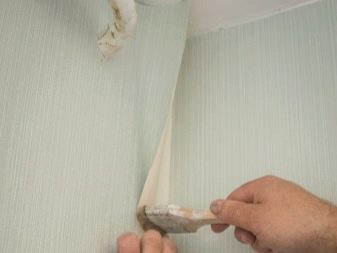
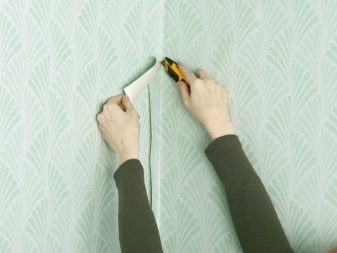
What should you pay attention to?
The corners of a room are not the only, and sometimes not the most difficult, areas of the work surface when wallpapering. There are areas that are equally difficult to access and require a special approach that you should think about in advance:
- Skirting boards. It is quite difficult to carefully arrange the joints between the edge of the wallpaper and the baseboard, so it is recommended to remove them during the repair and glue a strip of wallpaper, going to the floor and ceiling, and then cut off the extra centimeters along the spatula with a paper knife.
- The junction with the stretch ceiling. The advantage of a stretch ceiling is that its surface is washable, and you can not be afraid to stain it with glue. It is important to fit the upper edge of the cut as closely as possible to the ceiling sheet and cut off the excess without scratching its surface.
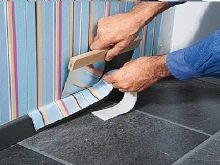
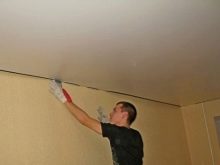
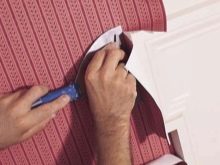
- A doorway of a non-standard shape. The simplest for pasting is a rectangular arch without a door. If after the door the repair involves the continuation of the same wallpaper, the jambs must be bypassed on both sides, gluing the strip as close to the door as possible. But open openings of non-trivial shape are a serious obstacle.It is recommended to properly glue the arch in the hall or living room in this way: measure the required number of strips with a margin of 3-5 centimeters, glue them, and only after that cut out the shape of the arch. Then cuts are made on the hem (it is possible with beveled edges so that the layer does not thicken). The trimmed "valves" are folded inward along the arch line with a small step of 3-5 cm, well glueing both the seamy side and the front side with glue. When the glue sets, repeat the same on the other side of the arch and glue over the arch with strips that will close the "valves".
If the inside of the arch should remain clean, after gluing the strips, carefully cut off the excess and slightly bend the edges inward (by a few millimeters). In this case, the wallpaper is glued before painting the vault. You can decorate the edge with decorative borders or a decorative corner.
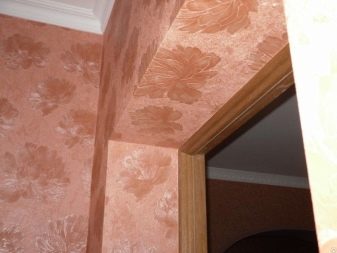
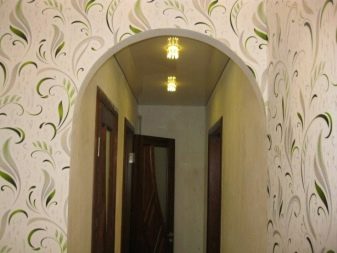
- Window hole. By itself, it does not present difficulties, since the window is pasted over around the perimeter, but here it is important to take into account the correct selection of the pattern. Most often, scraps from rolls go to the window, so it is important to observe the type of joining of the picture.
- Switches and sockets. Removing the switch itself will not work, but the work must be safe. To do this, you need to do two important things - turn off the electricity and remove the plastic case from the switch or socket. Then make an incision crosswise, without going beyond the perimeter of the box, bend the corners and put the bodies in place. After drying, cut off the bent corners with a knife.
- Radiator or battery. The places behind the radiator do not need to be covered completely. It is necessary to make vertical cuts in the places where the radiator is attached to the wall in a piece of wallpaper suitable for the size, then glue the wallpaper to the wall and smooth it with a plastic spatula or a narrow roller. This method is suitable for all rooms, kitchens and bathrooms.
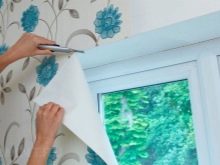
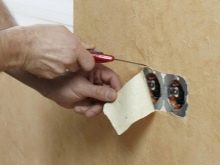
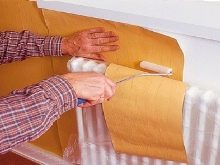
Decor elements
Walls by themselves are not always a full-fledged decoration of a room. In some cases, they lack minor details for the decorative wall decoration to be considered complete.
These details include:
- Decorative corners. A plastic corner or a PVC corner on top of the wallpaper has two functions - decorative and protective. As a decorative element, it covers uneven wallpaper joints in the corners and along the contour of the arches, and protection is necessary against scratches and tears at the corners of the wallpaper. To glue a corner of any type (internal, external, perforated, embossed, smooth, imitating different materials, colored), you need to consistently perform a number of actions:
- Take measurements of the height of the corner;
- Cut out a part of the profile of the required length with a sharp knife;
- Glue the corner onto liquid nails;
- Fix until dry with masking tape.
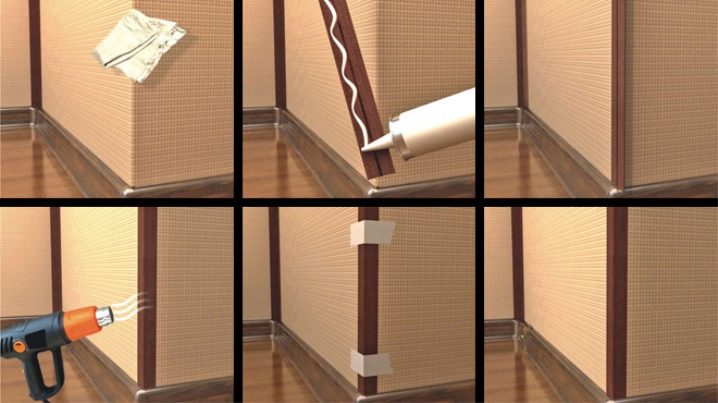
- Curbs. They are necessary to give a finished look to the wall decoration, and sometimes for zoning or accents in the interior. The classic way to use curbs is to highlight the top of the room under the ceiling, using them as a curtain rod. But modern designers use them in different ways, highlighting niches, areas near windows or fireplaces, doors, floors and so on with borders. It is very easy to glue a border on a smooth wallpaper. You just need to measure the required length, glue a part of the wall and decorative tape with glue, fix the border and roll it out with a roller. Remove glue residues with a soft cloth or microfiber cloth. Borders are not glued to wallpaper with a pronounced texture. To do this, you need to mark the width of the border, draw a straight line with a simple pencil and cut off the entire upper part of the wallpaper under the border with a paper knife. Then glue them like a regular strip of wallpaper, only horizontally. The joint should be as invisible as possible.

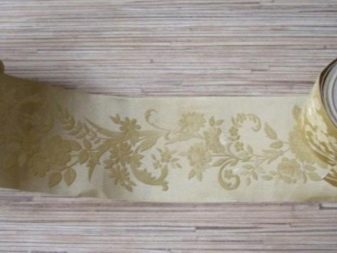
- Skirting boards. The ceiling plinth is glued to liquid nails with masking of the seams with a sealant. It can be painted. The skirting board of the floor covering can be put on self-tapping screws, since it may be necessary to remove it (lay carpet, laminate or warm floor).
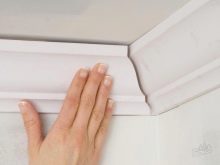
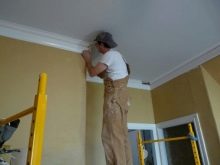

- MoldingLike skirting boards, it is best to stick on liquid nails.
- Baguettes. They are often put on putty, so it is better to glue them before wallpapering the walls so as not to stain their surface.
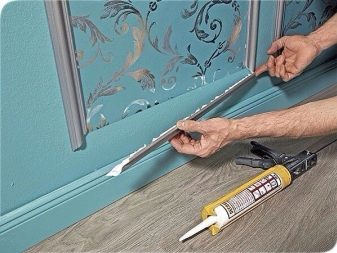
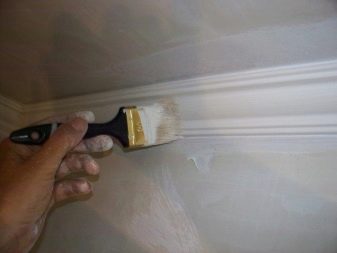
Tips & Tricks
Repair professionals recommend taking into account important nuances when gluing wallpaper yourself:
- The optimal drying conditions for the glue are at a temperature of 15-25 degrees, so it is better to glue them in the summer, not in the winter;
- They dry properly in a well-enclosed area without drafts. After gluing the windows must not be opened within 48 hours;
- Surface preparation is just as important as choosing the right color and pattern for the wallpaper;
- For each type of wallpaper, only glue recommended by the manufacturer is used;
- Excess glue must be removed immediately;
- It is a mistake to spare the money to buy an extra roll to cover the space behind the cupboard or kitchen set. Bare walls in the future will make it difficult to make a rearrangement.

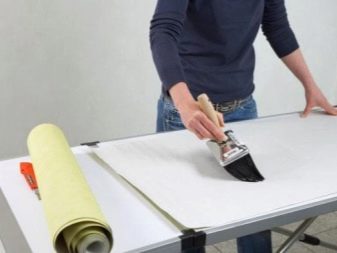
Examples in the interior
- Wallpaper is a pliable and versatile material that allows you to embody various stylish ideas and design ideas in the interior.
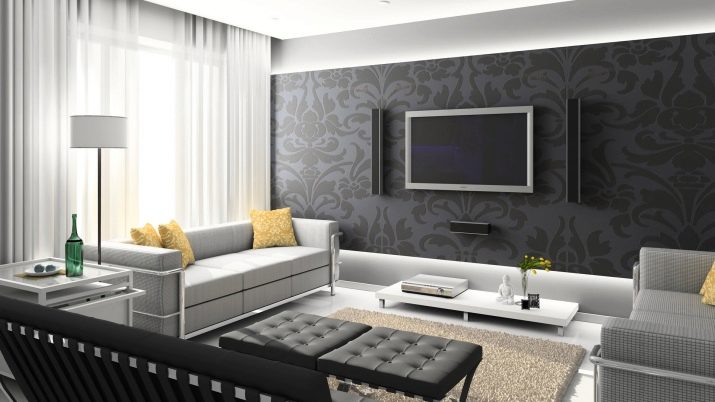
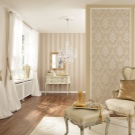
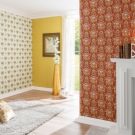
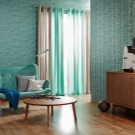
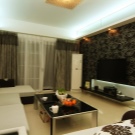
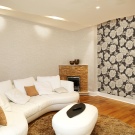
- Wallpapers in a light palette, suitable for minimalist and classic interiors, will never lose their relevance. An excellent background for the interior is plain wallpaper of different colors with a pronounced texture. Glitters, sparkles and blotches of contrasting colors help to revive them.
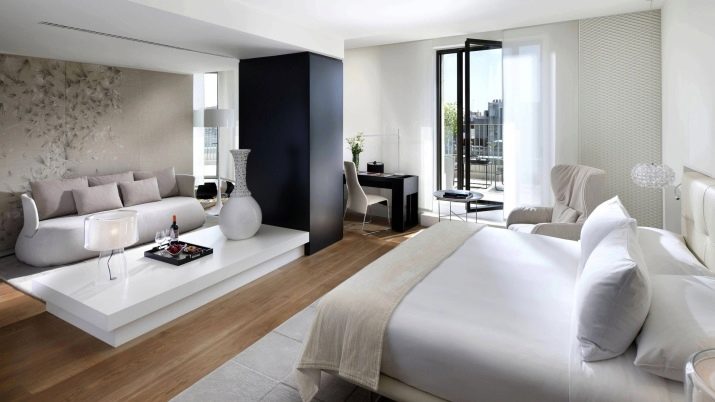
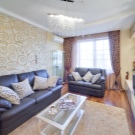
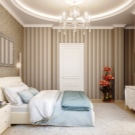
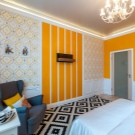
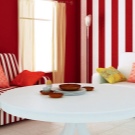
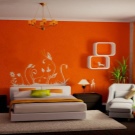
- Textile and natural products look luxurious in the interior, and metallic and photo wallpapers give a zest to modern styles.
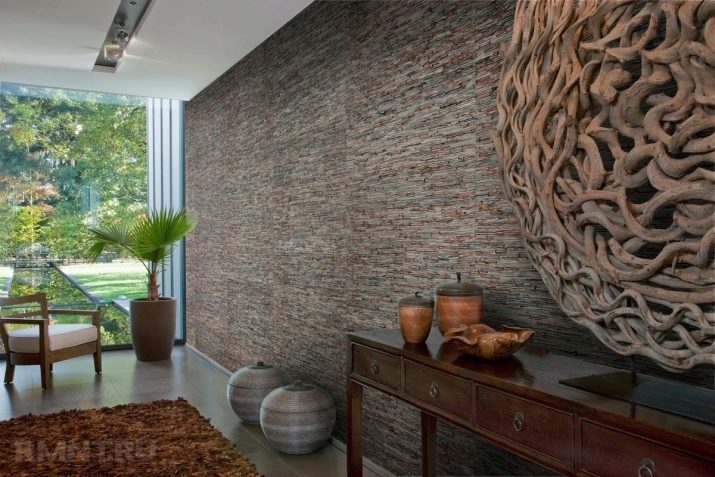

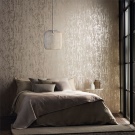

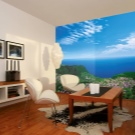
- The option in bicolor works well, when 2 or 3 of the 4 walls are decorated in one color, and the rest are in another. This not only creates an original contrast, but also allows you to visually change the parameters of the room, bringing it closer to the ideal square shape.
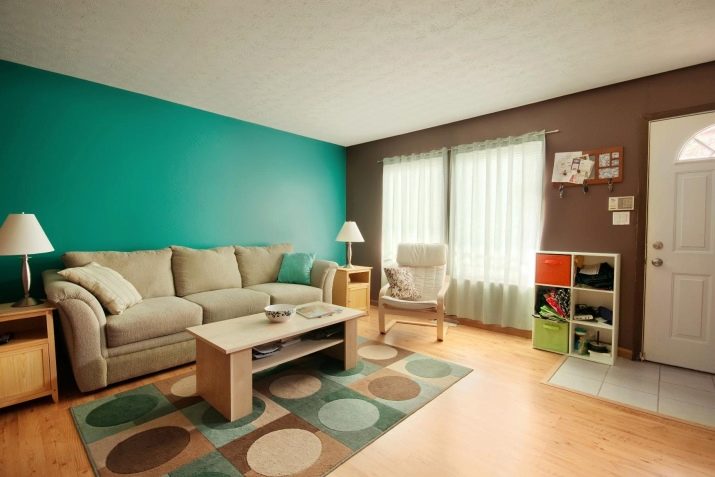
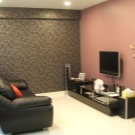
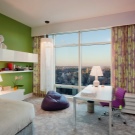
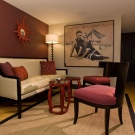


- The combination of wallpaper with paint and other finishing materials is also relevant: metal tiles, mirror and glass, textiles, decorative stone, bleached and painted wood, brick.
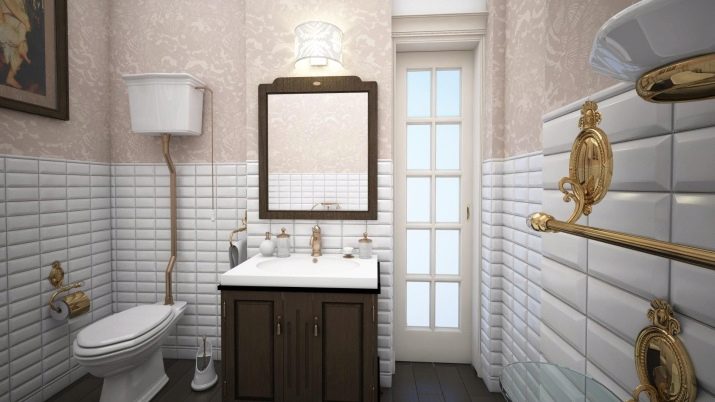
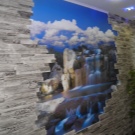

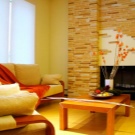


- A separate field for creativity is liquid surfaces, which provide an opportunity to create multi-color patterns and volumetric decor.
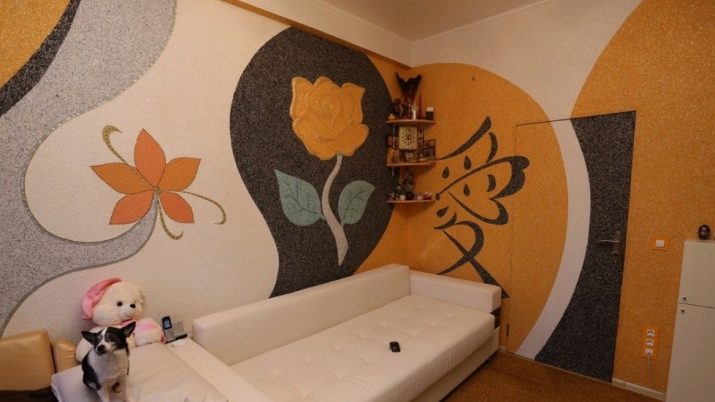
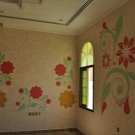
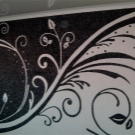


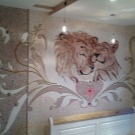
How to properly glue the wallpaper, see the video below.













The comment was sent successfully.